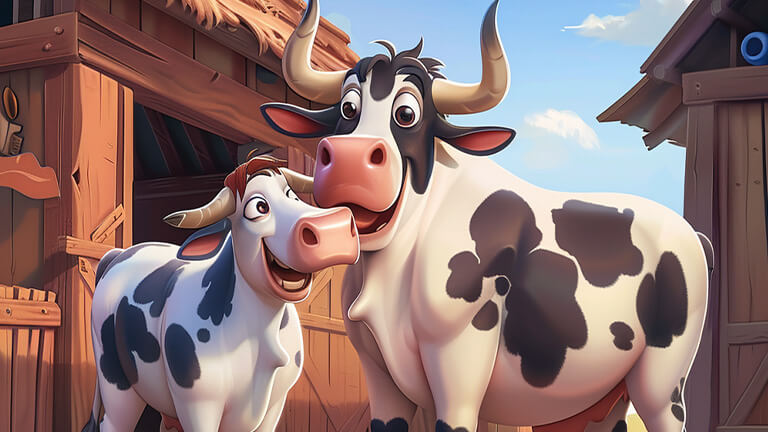Reproduction#

Increasing herd size directly impacts the production of meat, milk, hides, and other resources. The more cows, bulls, and calves a farm has, the higher the overall livestock productivity.
There are two main ways to increase the number of cattle:
- Purchasing animals at a fair or from a state-owned farm nursery is quick and easy, but requires a significant financial investment.
- Breeding your own young cattle by mating cows and bulls. This method is more time-consuming but potentially profitable, as it allows you to produce calves without the direct expense of purchasing livestock.
Next, we consider mating conditions, gestation periods, litter parameters, and rules for distributing newborn calves.
Preconditions for mating#
To obtain offspring, a cow and a bull must be prepared that meet breeding standards. You can use either your own animals or a leased bull, provided the cow is available.
Mandatory conditions for both animals:
- Age from 61 to 420 days inclusive.
- Weight not less than 320 kg.
- Full readiness for mating, indicated by a red-yellow indicator.
Animals under 61 days old and over 420 days old cannot mate. The exception is a pregnant cow that has reached 421 days old and is still carrying a calf. When mating a cow and a bull, a barn is required; when renting a bull, a barn is not required.
Pregnancy and rest periods#
After a successful mating, the cow becomes pregnant, indicated by a question mark icon. As the indicator fills green, the cow approaches the time of birth.
With optimal feeding, the gestation period is 26 days; with a poor diet, it increases. The sex of the unborn calf can be determined through an alchemist for 300 stamina. After the analysis, an icon of the fetus appears: blue indicates a male bull, pink indicates a female heifer.
After giving birth, a cow requires 6 days of rest, and a bull 5 days. If feeding is suboptimal, the recovery period is prolonged.
Number and weight of offspring#
After each mating, a cow gives birth to one calf. The key characteristic of a newborn calf is its weight, as it directly impacts the future productivity of the adult animal.
The weight of the calf depends on the weight of the cow and the bull at the time of mating and is calculated using the formula:
\( M =((m_1 + m_2)/ 2) • c \)| Variable | Explanation |
|---|---|
| \( c \) | Coefficient |
| \( m_1 \) | Weight of the bull at the time of mating |
| \( m_2 \) | Weight of a cow at the time of birth of offspring |
In the basic version, the coefficient is 0.06. If a barn is equipped with solar panels, the coefficient increases, allowing for heavier litters.
Calculation example:
\( M = ((421 + 450)/2) х 0.06 = 26.13 kg \)Distribution of newborn calves#
The number of animals a clone can support is limited by its social status. A newborn calf is automatically assigned to the mother’s owner.
If the owner’s limit is reached, the calf is transferred to another random clone of the same player who has a free spot. If the limit is exceeded for all clones of the player, the following rules apply:
- When a bull is born, it is automatically sent to a state nursery and receives coupons at a rate of 1 coupon per 1 kg of weight.
- When a heifer is born, it is donated to the state free of charge.
After changing owners, the calf immediately begins to consume feed in the new barn or cowshed, so the feed must be prepared in advance.
In this form, the distribution system allows for automatic adherence to limits and the continued continuation of the cattle breeding process.